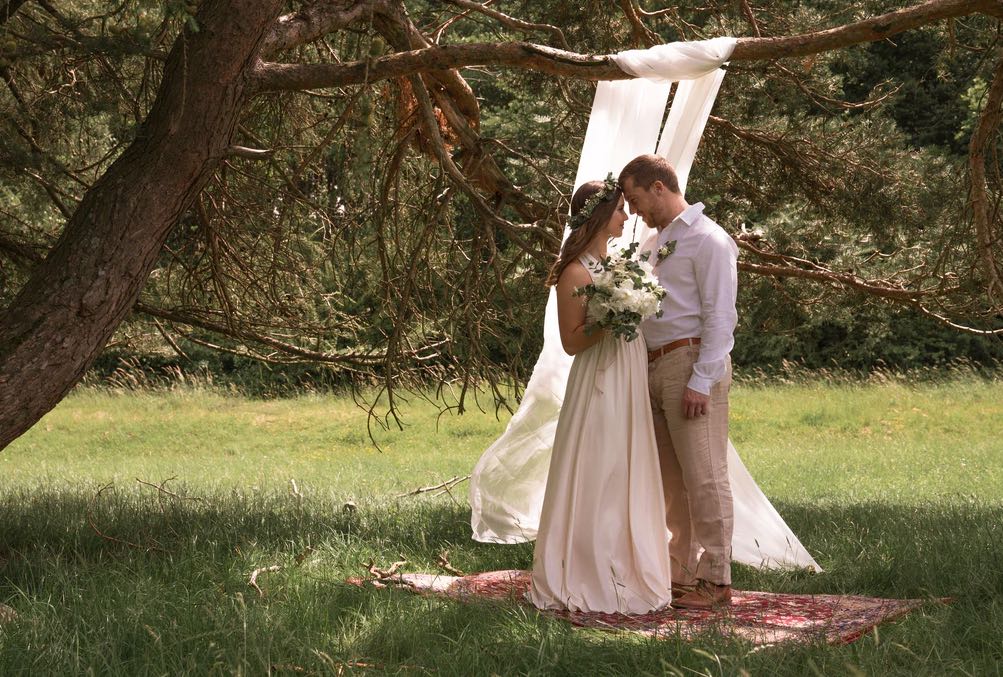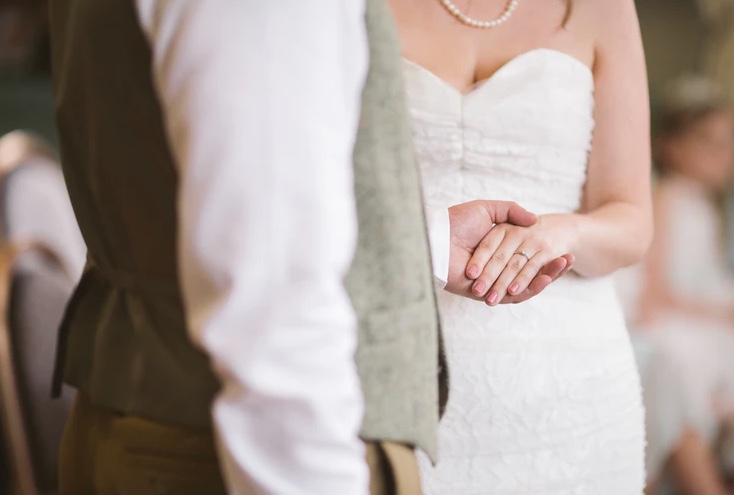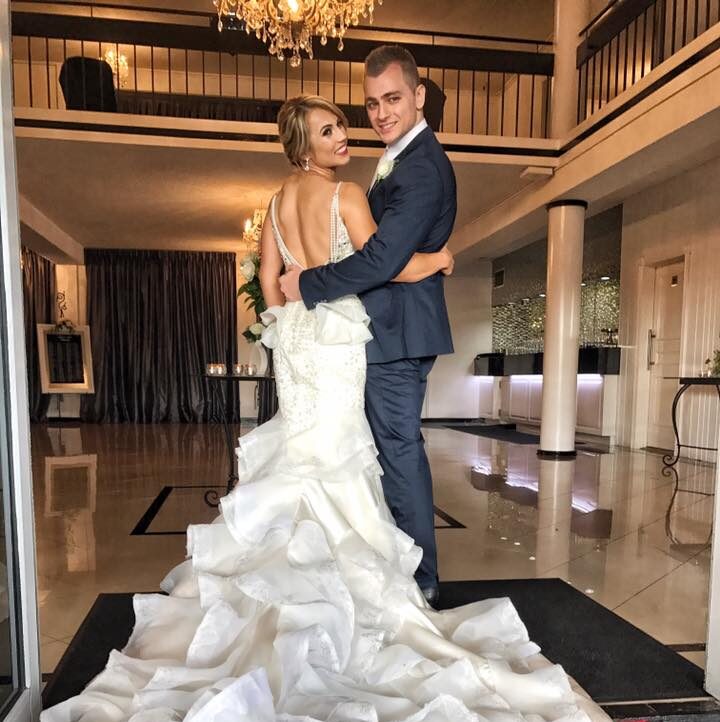Planning a wedding is one of the most exhilarating yet overwhelming tasks a couple can take on. But when you’re blending your unique spiritual beliefs with a traditional ceremony, things can get a bit more complex—and in the best possible way. Pagan weddings, with their rich history and deeply spiritual significance, allow couples to infuse every aspect of their celebration with meaning, nature, and personal touches.
When I worked with a couple from Melbourne planning their Pagan wedding at the stunning Dandenong Ranges, the first thing they asked was how to make sure every ritual they wanted would flow seamlessly into the next. We needed a wedding planning checklist that took their spiritual path into account, incorporating everything from handfasting to invoking deities. The goal was to create a ceremony that honoured their beliefs, celebrated their connection, and truly felt like their day. After all, every Pagan wedding is as unique as the couple themselves.
In this guide, we’ll walk you through every essential step to ensure that your Pagan wedding not only meets your spiritual desires but also stays organised and stress-free. Whether you’re incorporating sacred Pagan practices or simply infusing your ceremony with natural elements, you’ll find everything you need to plan the perfect Pagan wedding.
Key Elements of a Pagan Wedding Ceremony
When it comes to Pagan weddings, there’s no “one-size-fits-all” template. These ceremonies are highly personal, as they reflect a couple’s individual spiritual path, values, and traditions. However, there are some core elements that are nearly always present. Here’s a quick look at the key elements that often make up a Pagan wedding ceremony, from sacred spaces to the all-important handfasting.
The Heart of Pagan Weddings
If you’re planning a Pagan wedding, you’ve likely heard of handfasting. This beautiful and symbolic ritual is one of the most prominent features of Pagan weddings, and it holds deep meaning.
When my partner and I got married at the Vogue Ballroom in 2017, I couldn’t help but reflect on how different our experience was from traditional weddings—especially when we held hands as part of the ceremony. Although we didn’t incorporate handfasting into our own wedding (it wasn’t part of our tradition), I’ve seen firsthand how couples light up when they tie the knot in the most literal sense—by binding their hands with a cord as they vow to unite their lives.
Handfasting has its roots in pre-Christian Europe, and in modern Paganism, it’s a deeply spiritual act that signifies commitment. The cords used to bind the hands can be symbolic of a couple’s individual journey and the unity they now create together. They often represent the elements, such as fire, water, air, and earth, and are tied in specific patterns to represent their shared goals, values, and promises.
In practical terms, your handfasting ceremony will involve the couple standing before friends and family, hands bound together with a cord, as they exchange vows and begin their journey as partners. It’s one of the most sacred and meaningful parts of any Pagan wedding.
Sacred Space and Invocations: Creating Your Ritual Space
The next essential element of a Pagan wedding is the sacred space, often marked by a ritual circle. In my experience as a wedding planner in Melbourne, I’ve found that this is one of the most important aspects of Pagan ceremonies because it helps define the space between the mundane world and the sacred. You’re not just standing in a room or field—you are standing in a liminal space where the spiritual meets the earthly.
A sacred circle symbolises unity, protection, and the natural cycles of life. During a Pagan wedding ceremony, the officiant, usually a priest or priestess, will cast the circle, inviting guests to step into this sacred space. This is more than just a physical act; it’s a spiritual one. And it doesn’t just happen with words. The ceremony may include elements such as incense, chanting, or even drumming to help elevate the energy and invite the divine into the ceremony.
Once the sacred space is cast, the next step is to invoke the deities or spirits. This act connects the couple with the divine and aligns their union with the greater spiritual forces that shape their lives. Depending on the couple’s beliefs, they may invoke specific deities from the Pagan pantheon or call upon the four elements (earth, air, fire, and water), which have their own symbolic meanings: stability, communication, passion, and emotion, respectively.
It’s a powerful moment, one that elevates the ceremony from just a wedding to something truly divine. It’s also an opportunity for couples to reflect on the spiritual meaning of their union—not just for themselves, but for the community and the world around them.
Personalized Rituals and Traditions in Pagan Weddings
What makes a Pagan wedding so special is the flexibility to infuse it with personal meaning. Each couple brings their own beliefs, preferences, and traditions to the ceremony, meaning that no two Pagan weddings are alike. Whether you’re embracing ancient rituals or crafting your own unique expressions of love, Pagan weddings give you the freedom to design a ceremony that feels authentic and deeply connected to your spiritual path.
When working with couples in Melbourne, I always emphasise the importance of personalisation—your wedding is a reflection of your journey together, so every ritual, vow, and symbol should resonate with that. For instance, I recently helped a couple incorporate astrology into their ceremony, with the couple’s birth charts guiding the choice of deities to invoke and the timing of their vows.
Crafting Your Vows: What to Say and Why It Matters
In a Pagan wedding, the vows are more than just a promise to love each other forever. They are a sacred declaration of your commitment to the divine, the elements, and your shared spiritual journey. Whether you choose to recite traditional vows or write your own, your words should reflect the depth of your love and the significance of the union.
When my clients approach me about writing vows, I always suggest thinking about their relationship in terms of the elements or deities that represent their bond. For example, a couple might vow to nurture each other like the earth, communicate with the clarity of air, ignite passion like fire, and flow in love like water. These elements give the vows a tangible and spiritual depth, reinforcing the Pagan worldview that we are all interconnected with the natural forces.
Consider this scenario: Sarah and James, a couple I worked with recently, were passionate about nature-based spirituality. They decided to include a vow to always honour the trees and seasons, promising to grow together, just as a tree grows from the earth. These personalised vows became one of the most emotional and powerful moments of the ceremony.
Unity Rituals: From Jumping the Broom to Planting Trees
Pagan weddings often feature unity rituals—acts that symbolise the joining of two lives into one. These rituals can be as simple or elaborate as the couple desires, but they should always carry symbolic meaning.
One of the most popular unity rituals in Pagan weddings is jumping the broomstick. This ritual originates from several cultures, including African-American and Romani traditions, and represents the crossing of a threshold into a new life together. Jumping the broom symbolises the couple’s leap of faith into their future, and for many couples, it’s an incredibly meaningful way to mark the moment they unite as partners.
Another beautiful ritual I’ve seen is planting a tree together. A couple I worked with in the Yarra Valley chose this as their unity ritual. They planted a small oak tree, symbolising the growth of their relationship. Over time, as the tree grew, so would their commitment to one another. The act of nurturing the tree mirrors the nurturing of their love, and it’s a lovely visual reminder of their vows every time they see the tree growing in their garden.
Choosing the Right Location for Your Pagan Wedding
Location, location, location! This saying rings especially true for Pagan weddings, where the connection to nature is a central theme. Pagan ceremonies often take place outdoors, in natural settings, to honour the earth and the elements.
I’ve had the pleasure of helping many couples select outdoor venues that complement the spiritual aspect of their wedding. In Melbourne, we are blessed with an array of picturesque locations—from the serene beauty of the Dandenong Ranges to the lush, expansive grounds of the Royal Botanic Gardens. These spots not only provide a stunning backdrop for your ceremony but also align with Pagan beliefs that the earth itself is sacred.
Nature-Based Weddings: How Location Sets the Tone
In Paganism, nature is revered as a divine force, and it’s often seen as the perfect place to hold a wedding. The location you choose can deeply influence the spiritual tone of your ceremony. Whether it’s a secluded forest grove or a peaceful lakeside setting, the natural environment adds a layer of sacredness to your wedding.
A couple I worked with recently chose a remote beach on the Mornington Peninsula for their ceremony. The waves crashing against the shore, the wind rustling the trees, and the sound of seabirds overhead all created a sense of oneness with nature. During the ceremony, the couple invoked the water element, asking the ocean to bless their union. It was one of the most serene and spiritually charged ceremonies I’ve ever witnessed.
The Importance of Sacred Spaces: Indoor vs. Outdoor
While outdoor venues are popular for Pagan weddings, there are still many couples who choose to have their ceremony indoors—especially in Melbourne’s ever-changing climate! If you’re considering an indoor wedding, creating a sacred space that reflects your Pagan beliefs is key.
In my experience, even if you’re not in an outdoor setting, you can still make an indoor location feel spiritually significant. For example, in an indoor venue, you might have a space marked off with flowers and candles to form your “sacred circle,” or you could decorate with natural items like stones, feathers, and plants to bring the outdoors inside. Creating this connection between your ceremony space and nature is important for grounding the spiritual energy of the event.
Wedding Planning Checklist: Pagan Wedding Essentials
A Pagan wedding is more than just a celebration of love—it’s a sacred ritual that honours both your spiritual beliefs and your connection to one another. To ensure your Pagan wedding is as meaningful as it is beautiful, here’s a comprehensive checklist that covers the essential steps and elements for a successful ceremony.
Planning a wedding can get overwhelming, but by taking the time to organise and plan ahead, you can create an experience that resonates with both you and your guests. Whether you’re in the early stages of planning or finalising details, this checklist will help keep everything in order, ensuring no important rituals are missed.
Pre-Wedding Preparations: The First Steps
- Budget and Guest List:
Before diving into the fun details of your Pagan wedding, it’s important to establish your budget and draft your guest list. This will help you determine the size of your venue, the number of guests for rituals, and what you can afford when it comes to special items like decorations or officiants. - Choose Your Rituals:
This is where things get personal. Sit down with your partner and decide on the rituals you want to include. Will you have a handfasting? Jump over a broomstick? Plant a tree? These rituals will form the backbone of your ceremony, so it’s crucial to discuss what resonates with both of you. - Choose Your Officiant:
As we’ve discussed, finding the right officiant is essential. Consider whether you want a Priestess or Priest, a friend, or an independent celebrant. Ensure they are comfortable with the specific rituals you want to incorporate and are legally authorised if required. - Wedding Attire:
Whether you go for traditional wedding attire or something more fitting with your Pagan beliefs, it’s important to select outfits that make you feel connected to the spiritual nature of your ceremony. Many Pagan brides and grooms opt for nature-inspired attire, like earthy tones, or wear symbols of their faith (such as a pentagram necklace or a cloak).
Ceremony Planning: Rituals, Symbols, and More
- Create Your Sacred Space:
Whether indoors or outdoors, you’ll need to set up a space that reflects the spiritual tone of the ceremony. This can include setting up a circle of candles or flowers, placing altars or ritual objects like handfasting cords, and preparing your chosen symbols. - Incorporate the Elements:
Don’t forget to include representations of the elements (earth, air, fire, water) in your wedding décor. These elements not only represent physical forces but also spiritual qualities—stability, communication, passion, and emotion—so choose them wisely. - Write Your Vows:
Take time to craft vows that reflect your beliefs and values. Whether you’re drawing from your personal spiritual practices or crafting them around the symbolism of nature and the elements, your vows are a sacred promise to each other and to the divine.
Post-Wedding Traditions and Celebrations
- Community Involvement:
Pagan weddings often involve the community—family and friends may participate in rituals, offer blessings, or take part in dances and feasts. Consider how you want your guests to be involved in your ceremony. - Honour Your Ancestors:
Many Pagan weddings include rituals that honour ancestors, whether through a symbolic act like lighting a candle or offering a toast in their memory. These acts connect the couple to the past, grounding their future in the wisdom and love of those who came before them. - Closing the Ceremony:
After the vows, rituals, and blessings, it’s important to close the ceremony with intention. Consider lighting a unity candle, saying a final prayer, or completing one last ritual, such as jumping the broomstick, to symbolise the start of your shared life together.
The Role of Officiants in Pagan Weddings
The officiant in a Pagan wedding holds an important role, as they are the spiritual guide for the ceremony. Depending on your beliefs, the officiant could be a priest, priestess, or an independent celebrant. For many couples, finding an officiant who resonates with their spiritual path is essential to creating a meaningful and personal ceremony.
In my experience, couples who choose a Pagan officiant tend to feel a deeper connection to their ceremony. I recently worked with a couple who selected an experienced Pagan priestess to officiate their ceremony. The priestess didn’t just conduct the service; she helped guide the couple through the rituals, explaining the meaning behind each element, and offering spiritual insights along the way. This added an extra layer of depth to the ceremony, making it feel even more special.
If you’re choosing a celebrant or officiant, make sure they are comfortable with the specific rituals you plan to incorporate and that they are experienced in conducting Pagan ceremonies. In Melbourne, you can find several celebrants who specialise in Pagan weddings, but make sure they are licensed to legally marry you if required.
Final Thoughts on Planning Your Pagan Wedding
Planning a Pagan wedding is an incredibly personal and spiritual journey. Every decision, from the venue to the rituals, can be tailored to reflect your unique beliefs and connection to the divine. Remember, the beauty of a Pagan wedding lies in its flexibility and creativity, allowing you to craft a ceremony that truly speaks to who you are as a couple.
As you work through your checklist, don’t forget that the most important thing is to honour your journey and your love. Your Pagan wedding should feel as sacred and meaningful as the love you share. Take the time to create a ceremony that is deeply connected to your spiritual path, and trust that it will be a reflection of your bond, your beliefs, and the life you’re building together.




